Chain of Infection in Radiology

Cutting-Edge Advancements in Breast Cancer Screening: What You Need to Know
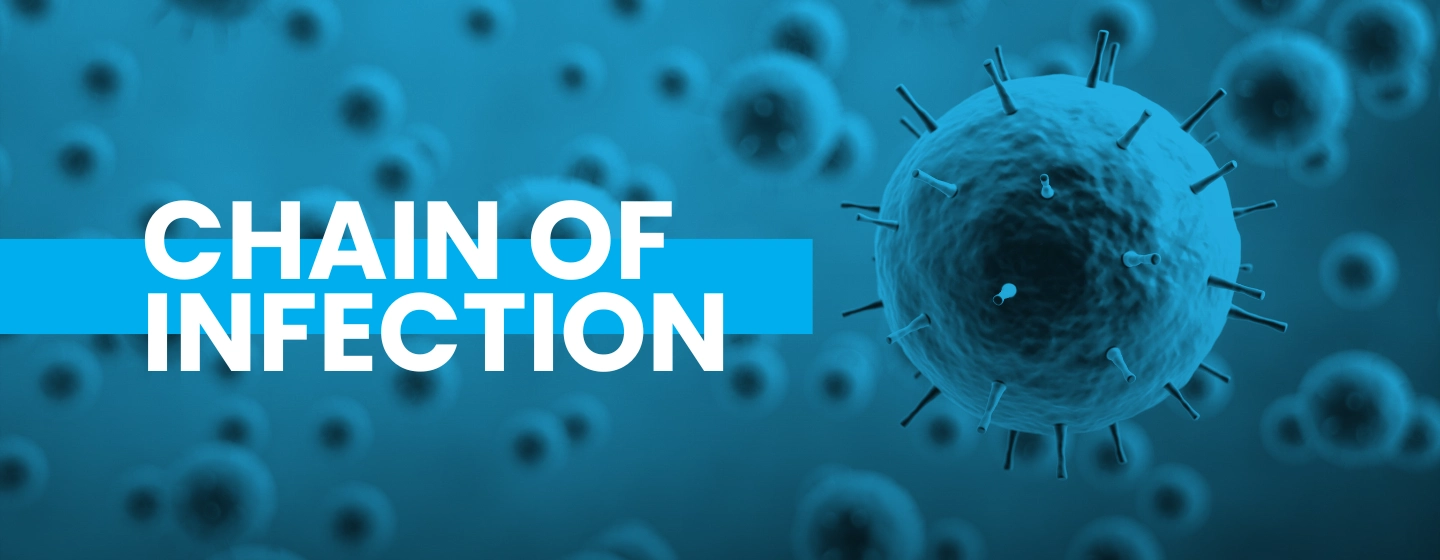
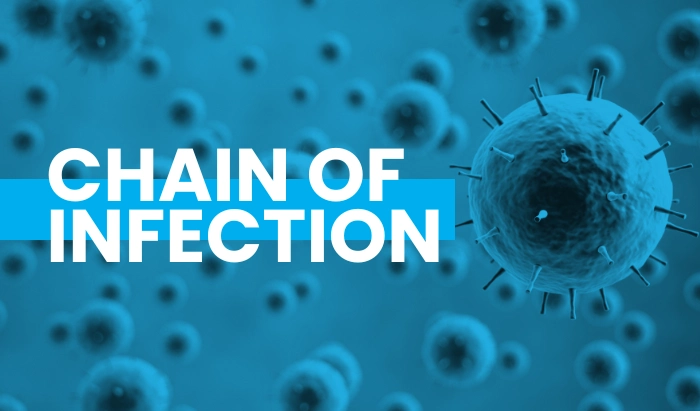
Introduction
The chain of infection is defined as the traditional epidemiological triad model which maintains that infectious diseases result from the interaction of agents, hosts, and the environment.
Transmission happens as the agent exits its reservoir or host through the exit portal, travels through some form of transmission, and enters through a suitable entry portal to infect a susceptible host.
There are many ways by which the infection can spread in the radiology department. They can be broadly categorized into areas within the RD imaging suites and those areas outside the imaging suites. Infections can be passed from patient to radiology staff and vice versa.
Technologists and interventional radiologists who play a vital role in the care of patients may be exposed to undiagnosed, yet infected patients. Therefore, to avoid germs from infecting more humans, we need to break the chain of infection. No matter the germ, there are six points where the chain can be broken and the germs can be stopped from infecting another person. If just one link in the chain is missing, the infectious disease cannot spread. The six links include infectious agent, reservoir, exit portal, mode of transmission, entry portal, and susceptible host.
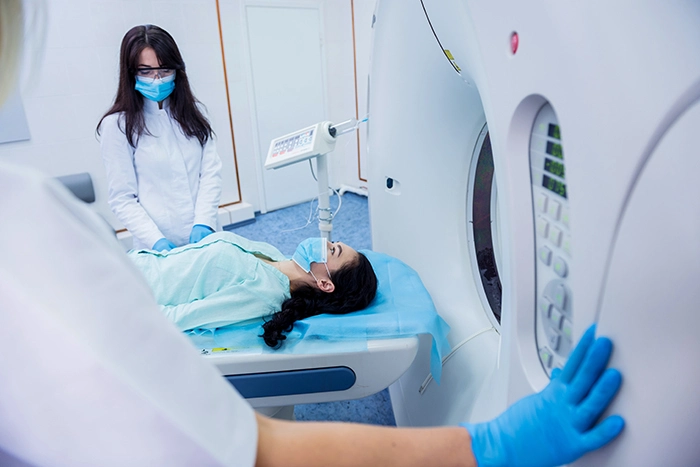
The 6 links in the chain of infection
The pathogen (or infectious agent)
The pathogen is the infectious agent. It is simply the germ that triggers the infection. Germs are all around us and within us, and many have an important role in keeping us healthy.
The reservoir
It is the place where germs can live and multiply. The location can be a patient, a client, or a staff member. The reservoir may also be a portion of the surrounding environment of the healthcare facility.
The portal of exit
The portal of exit is how the germ can escape from the reservoir. A healthcare worker comes along and touches the commode, and some of the germs move onto hands. So now, this worker’s hands are the portal of exit. Other portals can be people who vomit, or it can be body fluids especially when they cough. The portal can vary from one infection to another.
The mode of transmission
Is the way the germs move or spread from one place to another such as by health worker’s hands touching dirty equipment or contaminated medical instruments or through the air.
The portal of entry
The germs that have been moved from one place to another person who is the host. They can do this by entering wounds and cuts, being swallowed and breathed in.
The susceptible host
Healthy people have their defenses which help them fight infection. This means that even if some harmful germs enter the body, the person can ‘fight them off’ and stay well. Unfortunately, some people can’t fight infection effectively. People are ‘susceptible hosts’ – meaning they are vulnerable to developing an infection when germs invade their bodies.
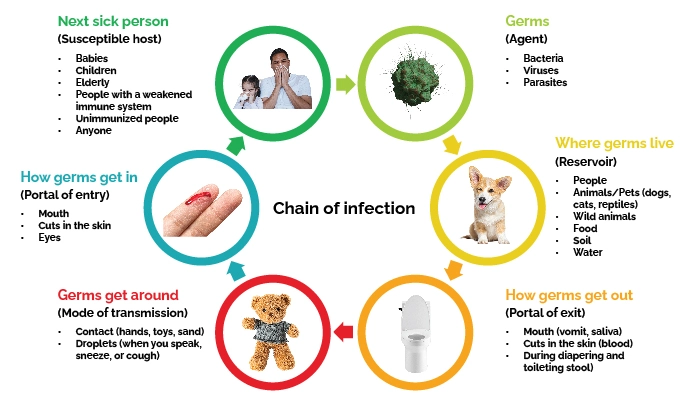
Technologists role in stop spreading infections: Precautions and measures
- Hand Hygiene Protocols: Contaminated hands can transfer infectious pathogens from one person to another and adjacent surfaces and devices. This is usually performed with alcohol hand sanitizers or by soap and water. Additional measures include proper use of gloves while performing radiological examinations and when handling patients.
- Sterilization and Disinfection of RD Equipment:
Radiology units are situated close to the pathogen-charged. Besides, the radiographer should position the cassette and extract it from the patient’s back so the cassette, portable radiographic machine, and radiographer’s hands can be contaminated. It is recommended that all radiology surfaces, including CT and MRI tables, ultrasound pads, etc.…, which come in close contact with patients, must be covered with removable sheets, these sheets should be replaced after each patient.
Cleaning radiological and imaging equipment is most effective when using alcohol wipes and chlorhexidine-based detergent.
- Environmental Infection Control:
The workstations used by physicians and imaging technologists to capture, edit, and save images can be contaminated with higher levels of microbial organisms than adjacent toilet seats and doorknobs.
The (Good Water Supply, Sanitation, and Hygiene) WASH protocol is also recommended for proper disinfection
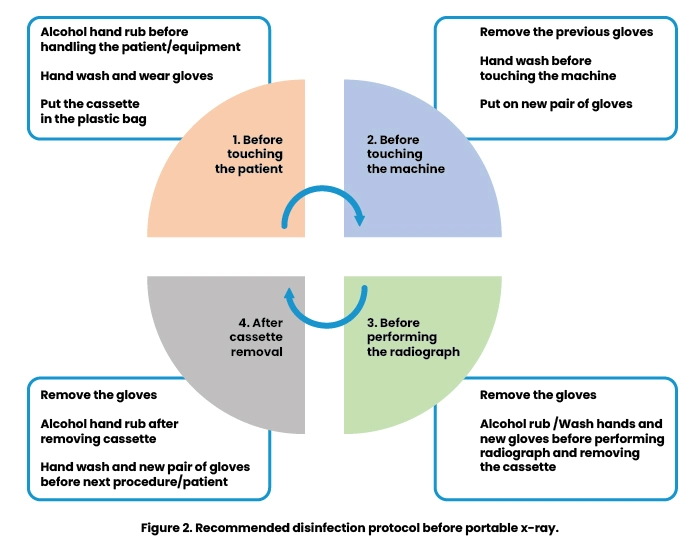
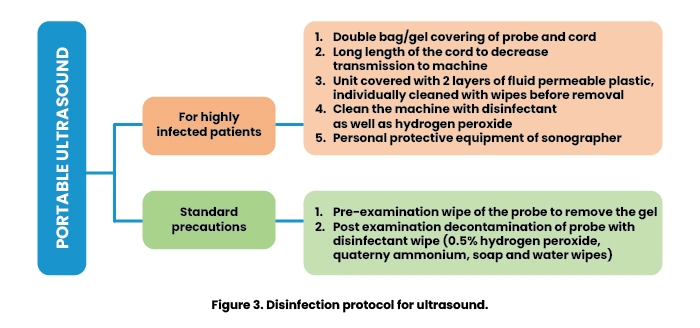
Covid-19 and Chain of infection
COVID-19 has rapidly spread from China to every continent in the world.
One key question that is common to all outbreak investigations is what the source of the infection was and how did it find its way into human populations? We understand it to be a zoonosis — an infection that animals are the host of, and which humans are accidental or incidental hosts. We know that this infection is caused by a virus, in particular a coronavirus. Coronaviruses are not new. They are a family of viruses, with which humans have considerable experience. The mode of transmission of the infection is via contact and droplet transmission. In basic terms, this is very important, because it goes directly to our efforts to interrupt transmission and break the chain of infection.
When people have COVID19, they can sneeze, cough, or breathe out tiny droplets containing the coronavirus into the air. These droplets can stay in the air for a while. When you breathe in these droplets, you can become infected. The virus can also get onto someone’s hand. The hand can transfer the virus to a doorknob or other surface. When you touch that doorknob, the virus gets onto your hand. And if you touch your face, nose, eyes, or mouth with your hand, the virus can get into your body. In terms of infection prevention and control strategies, the WHO recommends employing basic hygiene principles that are known to reduce the risk of transmission. Standard precautions include hand hygiene; use of personal protective equipment (PPE); safe use and disposal of sharps; routine environment cleaning; reprocessing of reusable medical equipment and instruments; respiratory hygiene and cough etiquette; aseptic technique; waste management and appropriate handling of linen. Airborne precautions include the use of P2 or N95 respirators for healthcare workers, the use of surgical masks for coughing patients, and the use of negative pressure rooms, where possible.
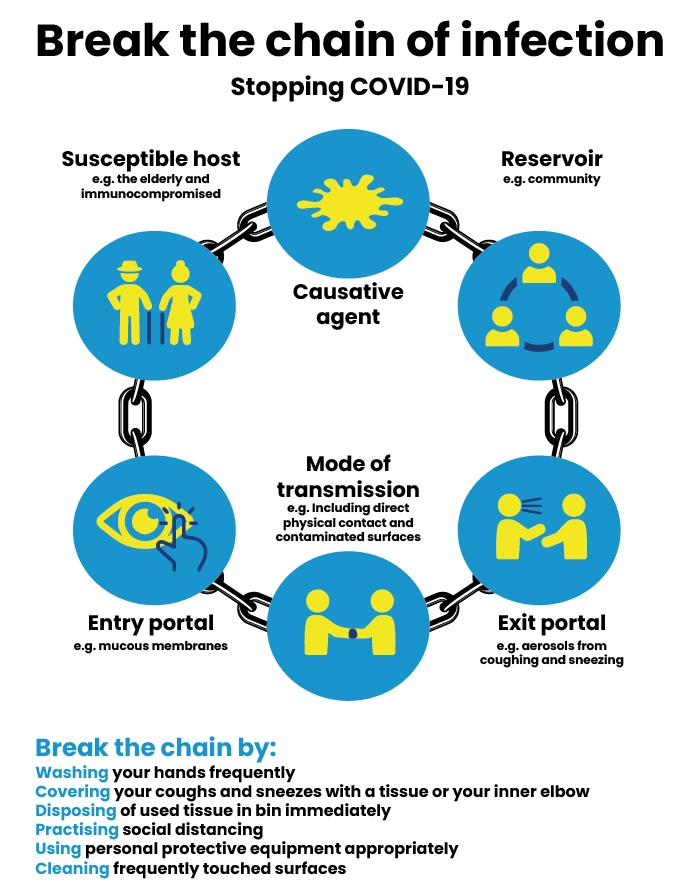
Disclaimer: The information provided on this website is intended to provide useful information to radiologic technologists. This information should not replace information provided by state, federal, or professional regulatory and authoritative bodies in the radiological technology industry. While Medical Professionals strives to always provide up-to-date and accurate information, laws, regulations, statutes, rules, and requirements may vary from one state to another and may change. Use of this information is entirely voluntary, and users should always refer to official regulatory bodies before acting on information. Users assume the entire risk as to the results of using the information provided, and in no event shall Medical Professionals be held liable for any direct, consequential, incidental or indirect damages suffered in the course of using the information provided. Medical Professionals hereby disclaims any responsibility for the consequences of any action(s) taken by any user as a result of using the information provided. Users hereby agree not to take action against, or seek to hold, or hold liable, Medical Professionals for the user’s use of the information provided.
